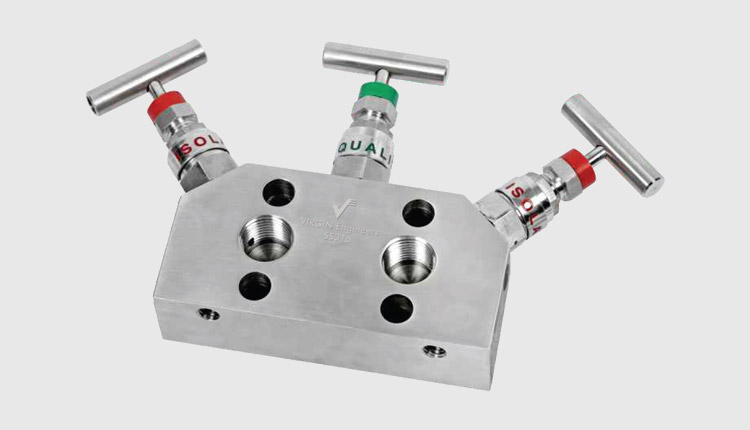An important component of fluid-based industrial systems is the valve. These valves fulfill several duties, including regulating high-pressure fluid flow and adjusting pressure.
There are various types of check and needle valves depending on their intended use. Check valves, high-pressure needle valves, ball valves, toggle valves, and purge valves are the most common. Two or more valves at a single system location which is involved to satisfy the requirements of two or more different conditions, as it takes up twice as much room which is inefficient.
It is usually understood that manifolds are equipment pieces that link two or more hydraulic system valves. In a single body arrangement, a variety of isolated valves can be coupled. A pipe can be connected to each of these valves through a separate aperture under it. The valve chamber, or main body, is shared by all of the valves.
Types of Manifold Valves
Two-way manifold valves (MFV2) Manifold valves with two-way manifold valves are primarily used for general plant maintenance, standard, and differential pressure measurement devices, pressure equalization, venting and blocking, and bleeding applications.
Three-way manifold valves (Series- MFV3) Pressure and dynamic pressure instruments rely on three-way manifold valves.
Five-way manifold valves (MFV5) are also utilized in temperature and dynamic pressure instruments.
Advantages of Manifold Valves
From mobile machines to larger industrial equipment, Stainless Steel Manifold Valves are used in a variety of industries.
Utilizing valve manifolds in a fluid control or regulation system has been shown to improve efficiency and minimize energy costs.
A simple, more compact design creates a simplified, faster flow path that reduces pressure drop and heat fluctuations. The cost of installation and fluid connections are reduced due to the shorter route flow.
Because there are fewer connections, there is less danger of an oil leak, which reduces the need for maintenance against stress, corrosion, and loose joints.
Because there are fewer pipes and connections, the arrangement is improved.
Small, compact cartridge sizes that are ideal for restricted situations.

